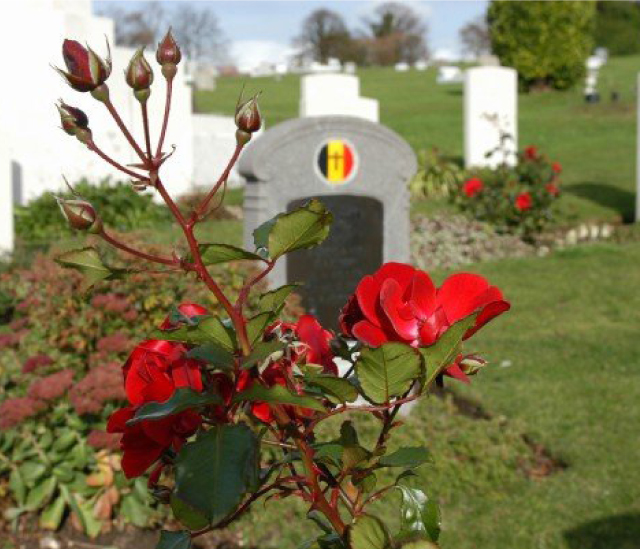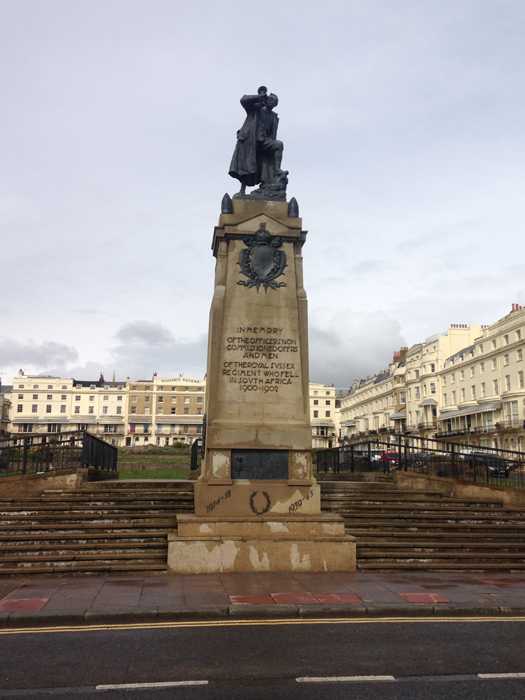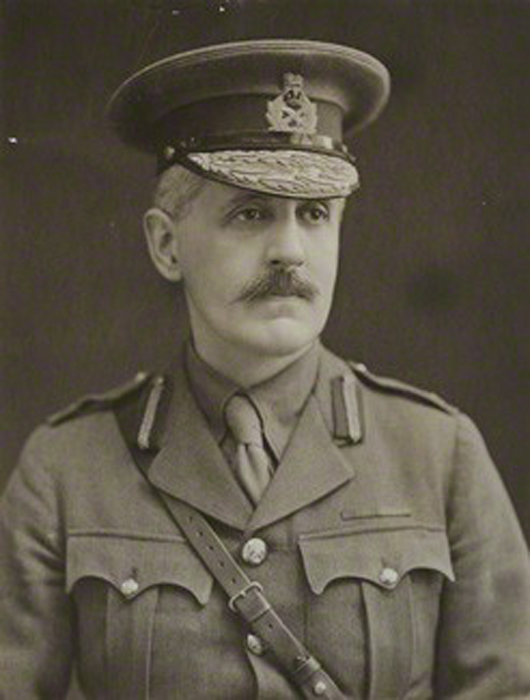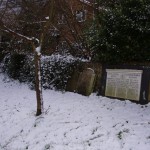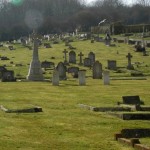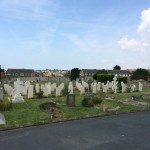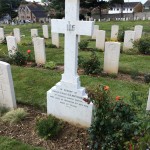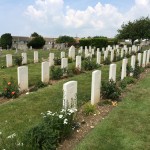At the end of the First World War the bodies of hundreds of thousands of British soldiers did not return home. Many other men who had been wounded and returned to Britain would also lose their lives and be buried in their country.
At the outbreak of the First World War any plans or consideration for how to deal with the bodies and graves of British soldiers took a back seat to the ongoing war effort. However, as the war continued beyond 1914 and the numbers of dead began to climb it became apparent that some form of new structure or institution would need to be created.
The Imperial War Graves Commission
In previous wars, British policy regarding the repatriation of their war dead often hinged on economic factors. If the family of the deceased were wealthy enough then they would pay for the body to be brought home for a funeral. If not, then the dead were often left in the countries where they had fallen or, depending on circumstances, given something like a burial at sea.
However, the actual process of creating war memorials was fairly well established by the outbreak of the First World War, with memorials and statues to recent conflicts such as the Boer War being relatively common around the country.
In the earliest days of the First World War much of the responsibility for maintaining the graves of fallen British soldiers was handed over to the French military and it was anticipated that responsibility would remain with them until the end of the conflict, when a more permanent solution would be discussed. Once it became clear how many men were beginning to die in the fighting, however, the decision was rapidly made that it would not be practical for any of the bodies to be returned to Britain when room on ships travelling across the channel could instead be used for wounded men.
As the war then began to stretch on through the years the decision was officially made that none of those who had fallen would be returning home.
At the beginning of the First World War, Fabian Ware was forty-five years old and, as a result, adjudged to be too old to fight. In order to serve in some way, he gained command of a Red Cross field ambulance unit and was subsequently deployed to France in September 1914. Whilst there he rapidly became dismayed at the lack of infrastructure for dealing with the rising number of dead. In response, Ware and his ambulance unit began to collect information on the graves of British soldiers in each area they visited.
Ware and his ambulance unit’s record keeping were so successful that by March 1915 they had been given official recognition by the Imperial War Office. Later the Imperial War Office renamed the unit the Grave Registration Commission (GRC) and transferred to the British Army. By October 1915, they held the records of over 30,000 British war graves. By the following May it was 50,000.
Such was the success of the Grave Registration Committee that they began to answer requests from families at home for photographs of their loved ones’ graves, and also began to send personnel to other military theatres in Greece and Mesopotamia to record the details of graves there. In 1917, the GRC was expanded and renamed by Royal Charter the Imperial War Graves Commission (IWGC) with Fabian Ware serving as its vice-chairman.
In 1918 a total of 587,000 graves had been recorded whilst another 559,000 men were listed as having no known grave.
Following the armistice the difficult task of dealing with these mass cemeteries and constructing war memorials began. The cemeteries themselves would be designed by noted architects such as Edwin Lutyens whilst Rudyard Kipling would serve as a literary consultant to produce the wording for memorials and headstones.
In the 1960s the IWGC was renamed as the Commonwealth War Graves Commission (CWGC) and continues its work to this day.
Lying where they fell
The British Army stuck to its original decision that those who fell in battle would remain there and their bodies would not be returned home. Where possible the newly designed cemeteries were placed as close to the point where men had originally been buried as they could. Many were constructed on the exact same ground, and around the Somme and Ypres, graves are often arranged in circles to mark mass graves or shell craters that claimed the lives of many men.
However, not all who died in the First World War perished in battle. Many soldiers were badly wounded in the fighting and, although they were evacuated back to Britain for medical treatment, some of their wounds were so severe that they proved fatal. In the same way that it had been deemed imprudent to return the bodies of men who had died abroad to England, it was equally seen as unnecessary to return the bodies of those who had died in Britain to the battlefield.
As a result, by the cruel twist of fate of having initially survived their wounds and been brought home, only to later die, these men were able to receive graves and memorial services which their families could attend.
East Sussex War Graves
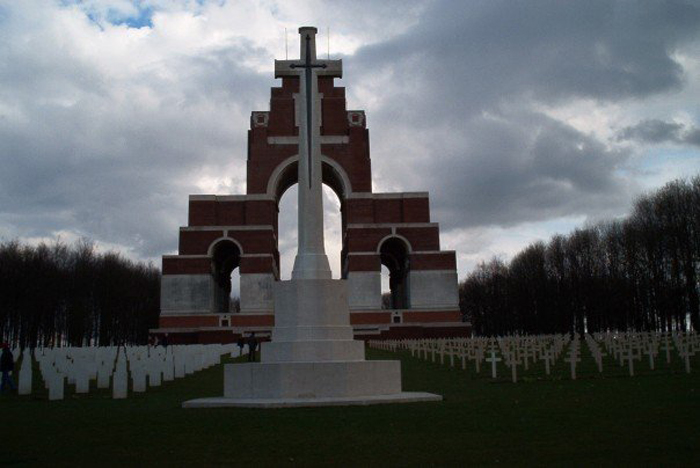
Cross of Sacrifice at the Thiepval Memorial to the Missing of the Somme – Image courtesy of Chris Kempshall
There are likely to be very few towns and villages across Britain that do not have the recognisable white headstones of the Commonwealth War Graves Commission within their cemeteries. East Sussex is no exception.
Even though they were contained within existing civilian cemeteries, war graves continued to follow the same rules and standards as they did in France, Belgium and beyond. All headstones were to be identical in regards to stone, shape and size. Headstones would feature either a national emblem, regimental crest or religious image along with the name, age, rank, and date of death of the soldier.
Cemeteries that contained forty or more graves feature the Cross of Sacrifice. These crosses, designed to mirror medieval burial markers, are up to 32 feet in height and feature a bronze broadsword down the centre. Cemeteries with over a thousand graves will also contain the Stone of Remembrance.
Civilian cemeteries in East Sussex contain the graves of many men from both the World Wars. Some had died of their wounds in Britain. Others were killed during enemy attacks in the Second World War, or their bodies were found washed up on shore after their ships had been sunk, such as an unnamed Marine from the HMS Ariadne in Winchelsea.
The cemetery in St Michael’s Church, Newhaven features a memorial to the men and boys of the Royal Naval Volunteer Reserves from Newhaven and Seaford. Along the Lewes Road the larger Newhaven Cemetery holds 29 graves of First World War casualties including one sailor who was never identified.
- Newhaven St Michaels Cemetery – Image courtesy of Chris Kempshall
- Newhaven Cemetery – Image courtesy of Chris Kempshall
Seaford Cemetery contains the graves of 248 men who died in the First World War and a further 25 from the Second. Amongst them are a number of Canadian soldiers, as the 10th Canadian Stationary Hospital was based near Seaford from November 1916 to January 1917.
- Seaford Cemetery – Image courtesy of Chris Kempshall
- Seaford Cemetery – Image courtesy of Chris Kempshall
- Seaford Cemetery – Image courtesy of Chris Kempshall
Bear Road Cemetery in Brighton contains, amongst the 275 First World War dead, a considerable number of Australian and Canadian men, alongside several Belgians. These men who had lost their lives, despite being evacuated to safety, were never to see their home countries again and were laid to rest in British soil.
Recording Remembrance
The Commonwealth War Graves that exist in Britain and out across Europe and the rest of the world continue to be cared for and maintained by the CWGC. War Memorials exist in most cities, towns or villages across the country. Very few places avoided losing anyone during either of the two World Wars. These ‘thankful villages’ as they came to be known include East Wittering located in West Sussex and the ironically named Upper Slaughter in Gloucestershire.
However, the memorialisation of the First World War later came to exemplify an ongoing problem. Those who had died and been lost were to receive memorials and gravestones but those who had lived through the conflict had no permanent memorial. The nature and structure of remembrance changed dramatically in the years following the war to focus evermore on those who had died, at times to the apparent detriment to those who had survived. Many soldiers came to feel isolated and marginalised in their own memories and history.
In the years since the World Wars the actual details and information contained on the hundreds of war memorials across East Sussex has been partially overlooked or forgotten. In an attempt to rectify this our sister project Recording Remembrance is leading a huge volunteer effort to locate, photograph, and collect as much information about memorials for all wars within the county.
Anybody who wishes to take part can access the website for Recording Remembrance through this link, and can assist in recording the records of war memorials spread across East Sussex that bear the names of those who died.

